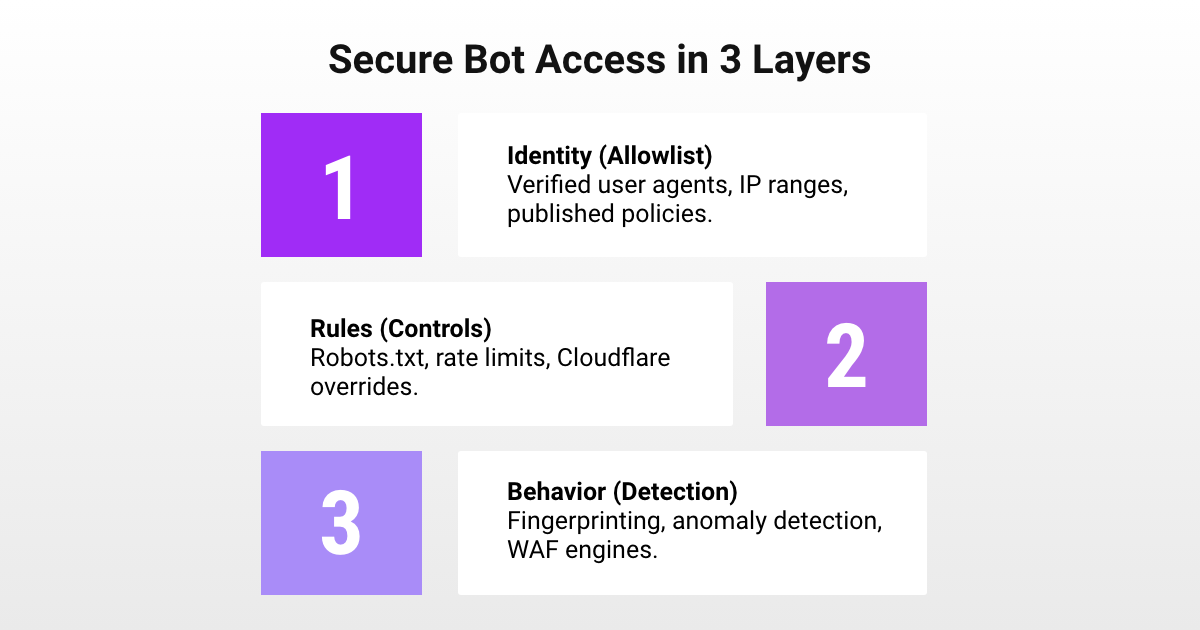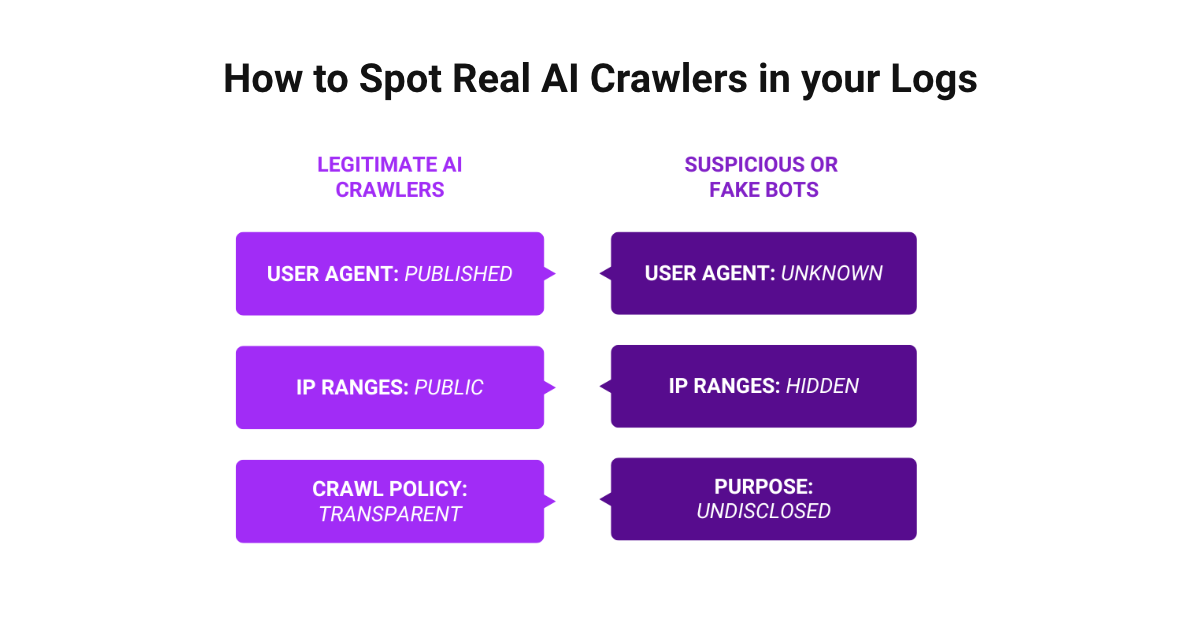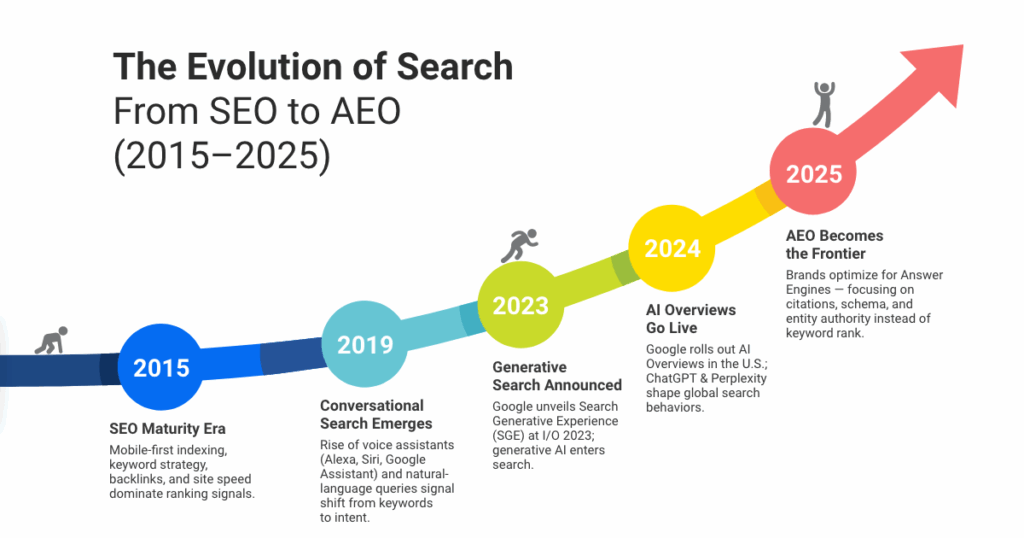
As generative AI becomes the new frontier of search, businesses are waking up to a stark reality: if your site is invisible to AI bots, you might be invisible in AI-powered answers. That’s especially important when tools like ChatGPT, Perplexity, Claude, and others increasingly serve as go-to sources of information, complete with in-line citations and summaries.
Here’s why blocking AI crawlers (intentionally or not) is a strategic risk… and what to do about it.
1. AI Crawlers Power Generative Search
Generative AI systems rely heavily on web crawlers that scan and index public content. These bots don’t just collect links like traditional search engines; they read, analyze, and synthesize text to answer questions, generate summaries, or even train models.
If a site blocks these crawlers, its content won’t be part of that data pool, meaning the AI won’t know it exists. As one expert put it, if you block OpenAI’s GPTBot via your robots.txt, “your content will not be included in ChatGPT’s knowledge base… you lose that potential visibility.”
2. Blocking AI Bots is Becoming More Common, Even by Default
A growing number of companies are choosing to restrict AI bot access. Some do this deliberately through robots.txt; others may have been opted into blocking without realizing it.
Cloudflare, which protects a massive portion of the web, recently started blocking known AI crawlers by default, and now offers a “pay-per-crawl” model that lets site owners monetize access or deny it entirely.
Search Engine Journal warns that this default blocking could make websites “invisible to ChatGPT, Claude, and Perplexity” unless owners explicitly enable access.
3. You Risk Losing Citations, Not Just Traffic
- AI summaries often rely on content they can read and confirm. If your content is blocked:
- You can’t appear in AI citations
- You can’t influence AI answers with your expertise
- Competitors who allow crawlers will replace you
Medium’s analysis found that sites allowing AI training are much more likely to be cited in generative search.
Yoast echoes this: blocking AI bots could remove your content from “the pool of potential citations” that generative search tools rely on.
4. The Web is Fragmenting: AI Models Won’t All See the Same Internet
A 2025 study found that a growing share of major websites now block popular bots like GPTBot and ClaudeBot, and that different industries block unevenly.
Another analysis shows that high-quality news sites are increasingly blocking AI bots compared to misinformation sites, meaning generative AI could unintentionally train on lower-quality data if this trend continues.
This fragmentation means what AI sees about your brand depends entirely on whether you allow access.
Pros and Cons of Allowing AI Crawlers Access to Your Site
Allowing AI crawlers is ultimately a strategic decision. Here is the balanced view you can present to stakeholders.
✅ Pros of Allowing AI Crawlers
1. Increased visibility in AI answers and citations
Your content can appear in ChatGPT, Perplexity, Claude, Gemini, Bing AI, and more, driving brand trust and direct traffic.
2. Stronger brand authority in generative search
AI models draw from what they can crawl. If you’re accessible, you become part of the model’s answer “universe.”
3. Competitive advantage
If competitors block AI crawlers and you don’t, you become the authoritative source by default.
4. Better structured data extraction
AI crawlers can better understand your products, services, pricing, and FAQs, producing more accurate AI answers.
5. Future-proofing for AEO (Answer Engine Optimization)
AI-first search is already surpassing SEO in relevance for many industries. Being crawlable sets you up for long-term visibility.
❌ Cons of Allowing AI Crawlers
1. Perception of “free usage” of your content
Some publishers worry AI models benefit from their content without compensation.
2. Potential for outdated or incorrect citations
If your content updates frequently, older crawls may misrepresent your message unless you monitor bot access.
3. Competitive leakage
AI models could summarize insights your competitors then leverage.
4. Server load concerns (minor for most sites)
High-frequency crawls could add load, but most major AI crawlers are lightweight.
5. Loss of content exclusivity
If you rely on proprietary data, you may want to selectively allow or restrict crawlers.
How to Allow Legitimate AI Crawlers While Blocking Harmful or Spam Bots
You don’t need to choose between total openness or total blocking. Smart configuration lets you allow reputable AI crawlers while keeping the bad actors out. Here are options:
1. Allowlist Trusted AI User Agents
You can specifically allow safe AI bots:
|
User-agent: GPTBot Allow: /
|
|
User-agent: ClaudeBot Allow: /
|
|
User-agent: PerplexityBot Allow: /
|
|
User-agent: Google-Extended Allow: /
|
This ensures the “good” crawlers get in while everyone else follows your defaults.
2. Block or Rate-Limit Unknown or Suspicious Bots
Use rules like:
| User-agent: * |
| Disallow: / |
…and then override for trusted bots only.
This blocks the noise while admitting the valuable traffic.
3. Use Cloudflare Bot Rules to Distinguish AI vs. Spam
Cloudflare can now:
- Automatically block harmful crawlers
- Allowlist specific AI bots
- Charge AI crawlers via its new “pay-per-crawl” marketplace
This gives precise control without touching your origin server.
4. Implement Bot Fingerprinting and Behavior Analysis
Tools like Akamai, Imperva, and AWS WAF can detect bots by:
- TLS fingerprint
- Behavior
- JavaScript execution
- Request patterns
You can allow AI crawlers known to be legitimate while filtering out harvesters, scrapers, or bulk-data bots.
5. Monitor AI Bot Access Logs
Most reputable AI crawlers publish:
- Their user agent
- Their IP ranges
- Their crawl policies
Comparing logs with these published IPs lets you accept only real AI bots and reject imposters.
📣 Is your site blocking AI crawlers? Here’s how to find out:
If you don’t know whether your site is blocking or allowing AI crawlers, you may be invisible in AI-powered answers without realizing it.
Find out instantly:
👉 Visit www.rankabove.ai to scan your site and see whether AI systems like ChatGPT, Perplexity, Claude, and Gemini can crawl your content, or if you’re unintentionally blocking your brand from appearing in AI answers.
![[Aggregator] Downloaded image for imported item #231858](https://fulcrumdigital.com/wp-content/uploads/2025/11/Blocking20AI20Crawlers20Could20Kill20Your20Brand20Visibility_Blog_Fulcrum-Digital_Hero.png)






